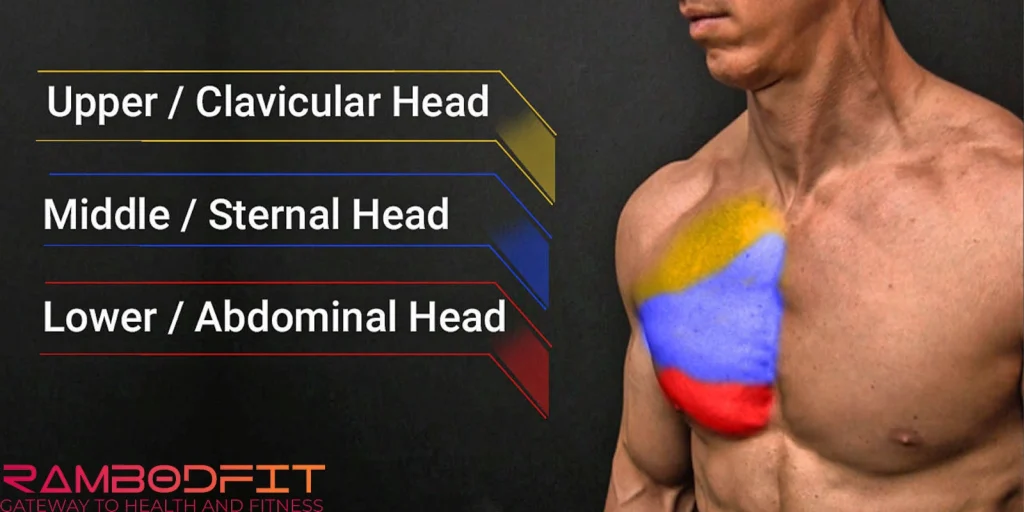


When it comes to building muscle, the number of sets for the chest to grow per week plays a crucial role in designing training plans. In this article on RambodFit, we are going to specifically focus on chest muscles and how to have a strong and well-developed chest.
I myself as an exercise physiologist, had always had problems with growing my chest muscles, until I figured out the best training systems and proper volume for building muscle.
Table of Contents

Before we can determine the exact suitable number of sets for the chest to grow per week, we have to know what volume is in the science of exercise.
Volume, typically measured as (sets x reps x load), is a key factor in muscle hypertrophy and by including it in the right way in your training, you benefit from it undoubtedly.
However, it would be best to consider that more volume isn’t always better. Too much volume can cause injury, impaired recovery, and overtraining.
Brad Shoenfeld, one of the greatest scientists in the field of hypertrophy, has numerous studies about muscle growth, and here we focus on volume and number of sets for the chest to grow per week.
The chest muscles (pectoralis major) are divided into 2 main sections:
These sections are activated differently depending on the angle of movement and the type of exercise.
For example:
• Incline presses and flies target the upper chest.
• Flat presses and flies hit the mid-chest.
• Dips or decline presses emphasize the lower chest.
Understanding the anatomy of every muscle you want to grow is necessary. Knowing the angles and biomechanics will help you choose the best training for you and perform in the most proper position.
Let’s just give you the main answer, most research suggests that the best number of sets for the chest to grow per week is something between 10 and 20 sets.
Now between 10 to 20 reps is a wide range, so how should we know the exact number of sets for the chest to grow per week?
Depending on your experience level, recovery capacity, and intensity it varies and you should give your body some time to adapt to the number of sets for the chest to grow per week.
Also, it is important not to get overtrained by the wrong choice of movements and volume.
Overtraining can be fixed very hard and you should avoid it from happening.
Beginner (0–1 years of consistent training)
If you’re new to training, start on the lower end of the spectrum. A weekly volume of 8–12 sets is often enough to provide the necessary stimulus for growth while allowing sufficient recovery.
Why less volume? Beginners typically experience what we call neuromuscular adaptations, meaning their initial strength and size gains come from learning how to properly recruit muscles during exercise.
Intermediate (1–3 years of consistent training)
Intermediate lifters can tolerate and benefit from more volume—around 12–16 sets for the chest to grow per week. At this stage, your body is starting to adapt to the stress of resistance training.
Advanced (3+ years of consistent training)
For advanced lifters, the volume sweet spot is typically 16–20+ sets per week for the chest. Advanced trainees have a higher tolerance for stress and recovery, and they often require more volume to continue seeing progress due to the way the body adapts to training over time.
Let’s break this down further and explain the essential factors except the number of sets for the chest to grow per week.
Frequency Can Cause Grow
Research suggests that training each muscle group 2–3 times per week is better for hypertrophy than once a week.
This higher frequency allows you to distribute your weekly volume into manageable sessions, improving recovery and performance.
For example, instead of doing 16 sets for the chest in a single session which could lead to fatigue, lack of time, and decreased performance, you might split those sets into two or three days.
For example:
Day 1: 8 sets
- Bench press 4×10
- Cross over 4.12
Day 2: 8 sets
- Incline dumbbell press 4.12
- Cross down upper chest 4.12
This approach aligns with a study by Helms (2018), which found that spreading volume over multiple sessions maximizes both hypertrophy and recovery.
However, a recent study (2024) by Brad Shoenfeld highlights that, the first priority for muscle to grow is to perform the adequate volume in a week and it isn’t that important to do it in different sessions.
Exercise Selection
For well-rounded chest development, include a mix of compound and isolation movements that target different angles.
Distributing sets across various exercises ensures balanced growth.
For example, you might wanna consider this type of distribution according to your chest weakness:

The intensity (weight used relative to your 1Rm) and repetition range are also important factors for effective chest training.
Optimal Repetition Range for Hypertrophy
Studies (Schoenfeld, 2017) suggest that hypertrophy occurs across a wide rep range, but 6–12 reps per set tend to be the most efficient for muscle growth.
However, incorporating different rep ranges within your weekly training plan can be beneficial.
For example, your one chest session might look like:
Intensity
Aim to work at 65–85% of your one-rep max for most hypertrophy.
Also, you can consider (RIR), training close to failure leaving 0–3 reps in reserve. RIR ensures you’re adequately challenging your muscles but most importantly you should understand the concept of failure first.
While research provides general guidelines, individual differences play a significant role in muscle hypertrophy.
Here are some key factors to consider:
1. Recovery Capacity
Recovery varies depending on factors like sleep, nutrition, age, and stress levels. If you’re feeling excessively fatigued or sore, you may need to reduce volume or improve your recovery strategies.
2. Training Experience
As mentioned earlier, beginners require less volume than advanced lifters. Over time, you’ll develop a better understanding of how much volume your body can handle.
3. Genetics
Some people naturally have more fast-twitch muscle fibers or better recovery capacity, which can influence how much volume they need for growth.
4. Training Goals
If you’re training for overall aesthetics, you might emphasize chest volume more.
Plan 1
Here’s an example of how you might structure chest volume in one session:
| chest press machine | 4.10 |
| inclined barbel press | 4.12 |
| cross over | 4.12 |
| fly chest machine | 4.8 |
| dip | 4. failure |
plan 2
Here’s an example of how you might structure chest volume in a week:
| Tuesday | tuesday |
|---|---|
| inclined chest press machine 12.10.8.8 | inclined fly dumbell 4.12 |
| cross over 4.12 | push up 4.10 |
| fly machine 3.12 | cross down 3.10 |
So, how many sets for chest per week? The answer depends on your experience level, recovery capacity, and goals, but here’s a quick recap:
• Beginners: 8–12 sets/week
• Intermediates: 12–16 sets/week
• Advanced trainees: 16–20+ sets/week
despite the number of sets being important for the chest to grow, other factors like recovery, nutrition, consistency, and progressive overload are also important.
By giving your body time and adding the tips above to your training routine, you will develop the chest muscle you want.
Enough talking, let’s start the process and see if we can get a chest muscle like Arnold.!
For more information about the science of exercise and nutrition, I suggest visiting Pubmed and reading the articles below:
The number of sets for the chest to grow per week is different based on the experience of the individual.
It varies if we are talking about beginners, intermediate or advanced.
However, It is suggested something around 12 to +20 sets for the chest to grow per week and other factors are involved.
There are different scientific claims about this question.
If you train your chest twice a week, you can manage your time and fatigue and have a better performance, however if you can train the adequate volume needed for your chest in one session, then that’s ok.